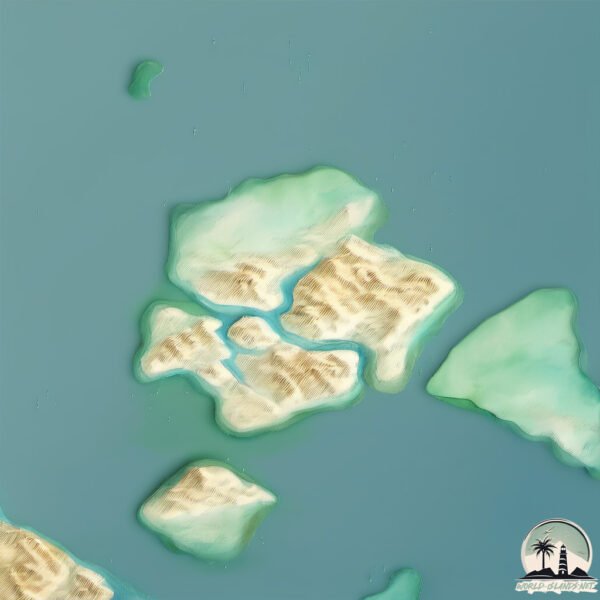Welcome to Isola di Murano , a Temperate island in the Adriatic Sea, part of the majestic Atlantic Ocean. This guide offers a comprehensive overview of what makes Isola di Murano unique – from its geography and climate to its population, infrastructure, and beyond. Dive into the details:
Geography and size of Isola di Murano
Size: 1.431 km²Coastline: 5.9 kmOcean: Atlantic OceanSea: Adriatic SeaContinent: Europe
Isola di Murano is a Small Island spanning 1.4 km² with a coastline of 5.9 km.
Archipel: –
Tectonic Plate: Eurasia – One of the world’s largest tectonic plates, the Eurasian Plate covers a significant portion of Europe and Asia. It’s characterized by diverse geological features, including the Ural Mountains, the European Plain, and the Himalayas formed from its collision with the Indian Plate.
The geographic heart of the island is pinpointed at these coordinates:
Climate and weather of Isola di Murano
Climate Zone: TemperateClimate Details: Humid Subtropical ClimateTemperature: Hot Summer
Climate Characteristics: With continuous rainfall and hot summers, this climate is common in some coastal regions, supporting diverse vegetation.
Topography and nature of Isola di Murano
Timezone: UTC+01:00Timezone places: Europe/ParisMax. Elevation: 1 m Mean Elevation: 1 mVegetation: Urban AreaTree Coverage: 78%
The mean elevation is 1 m. The highest elevation on the island reaches approximately 1 meters above sea level. The island is characterized by Plains: Flat, low-lying lands characterized by a maximum elevation of up to 200 meters. On islands, plains are typically coastal lowlands or central flat areas.
Dominating Vegetation: Urban Area
Vegetation: 2 vegetation zones – Low Diversity Island
Infrastructure and Travelling to Isola di Murano
Does the island have a public airport? no .
Does the island have a major port? no .
The mean population of Isola di Murano is 2699 per km². Isola di Murano is Densely Populated. The island belongs to Italy .
Continuing your journey, Isola di Polesine is the next notable island, situated merely km away.
Visiting Murano & Burano | Islands near venice
Looking to explore the beautiful islands near Venice? Check out this informative video guide that showcases the best way to get ...
Visiting Murano & Burano | Islands near venice
Looking to explore the beautiful islands near Venice? Check out this ...
Looking to explore the beautiful islands near Venice? Check out this informative video guide that showcases the best way to get ...
Exploring Isola di Murano ... the Glassmaking Island of Venice Italy
Exploring Isola di Murano ... the Glassmaking Island of Venice Italy ...
Exploring Isola di Murano ... the Glassmaking Island of Venice Italy Itinerary Trailer.
Isola di Murano - Isola del vetro - Venezia
Guida alla visita dell'isola di Murano a Venezia: Isola di Murano è ...
Guida alla visita dell'isola di Murano a Venezia: Isola di Murano è formata da una serie di isole collegate da ponti nella Laguna di ...
Italy is classified as Developed region: G7: Group of Seven – Major advanced economies, including Canada, France, Germany, Italy, Japan, the United Kingdom, and the United States. The level of income is High income: OECD.
News – Latest Updates and Headlines from Isola di Murano
Stay informed with the most recent news and important headlines from Isola di Murano. Here’s a roundup of the latest developments.
Loading...
Please note: The data used here has been primarily extracted from satellite readings. Deviations from exact values may occur, particularly regarding the height of elevations and population density. Land area and coastline measurements refer to average values at mean high tide.

